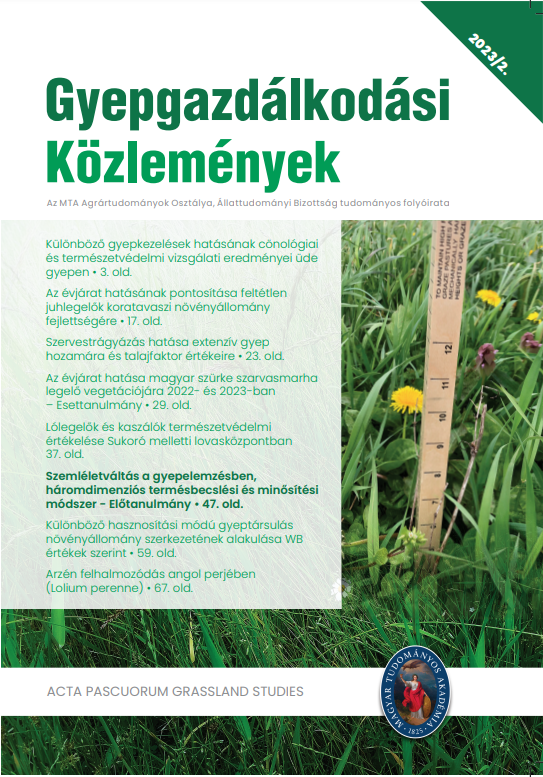The seasonal effect on the vegetation of Hungarian grey cattle pasture in 2022 and 2023 - A case study
Authors
View
Keywords
License
Copyright (c) 2024 Grassland Studies

This work is licensed under a Creative Commons Attribution-NonCommercial-NoDerivatives 4.0 International License.
How To Cite
Abstract
The "Szűzföld" area, managed by the Pro Vértes Public Foundation, has been managed for nature conservation and economic grazing since 1998 with Hungarian grey cattle. In the present work the vegetation data of the pasture were analysed for the years 2022-2023, in order to investigate the effect of the weather conditions in an extremely dry year (2022) and an extremely wet year (2023) using 2 × 2 m coenological records. To analyse the ecological indicators of species, we used Borhidi's relative plant ecological indicators: relative nitrogen demand (NB) and relative soil water and soil moisture (WB) scores. We also assessed the data according to Simon's conservation value categories (TVK) and Borhidi's social behaviour types (SBT). The grassland management assessment of the vegetation was based on the forage value scores of the species used by Klapp et al.
The results showed no significant differences in species in the two years, but significant differences in cover values. In the year with rainfall, the proportion of accompanying species decreased, while the proportion of weeds and natural disturbance tolerant species increased. The amount of grasses and legumes increased, which are important for grassland management.

 https://doi.org/10.55725/gygk/2023/21/2/13499
https://doi.org/10.55725/gygk/2023/21/2/13499